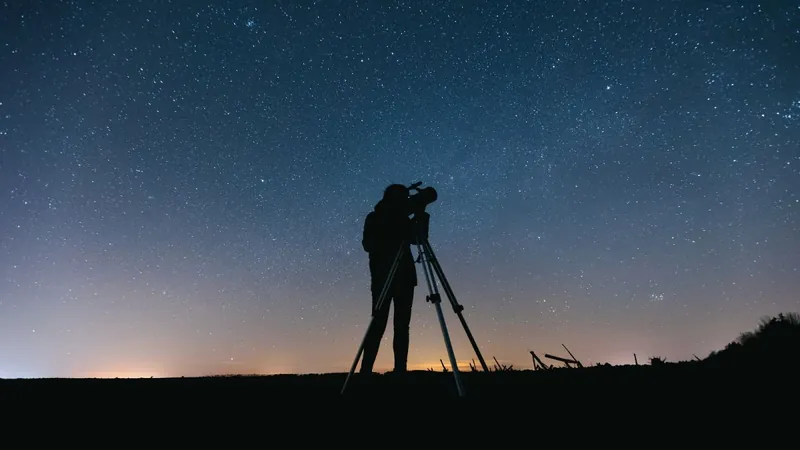
Don't Miss Out: January's Breathtaking 'Planet Parade' Captivates Europe!
2025-01-19
Author: Daniel
January's Planet Parade
This January, skygazers across Europe are in for a celestial treat! Six planets are aligning in what's being hailed as a stunning planetary parade, and the best part? Most of them are visible to the naked eye!
What is a Planet Parade?
But what exactly is a planet parade? These spectacular alignments occur when several planets appear to line up in our night sky. According to Hannah Sparkes, planetarium supervisor at the Bishop Museum of Science and Nature in Florida, “They’re not in a straight line, but they’re pretty close together on one side of the Sun.” This phenomenon is an astronomical gift that happens at least once a year, although last year’s parade only showcased two visible planets without the need for a telescope.
Why Are Planets Aligned?
So, why are these planets so perfectly aligned? It all goes back to the ecliptic — the imaginary path traced by the Sun across our sky, influenced by the formation of our solar system from a flat plane of dust and gas. All planets, including Earth, follow this pathway, which is why they align periodically.
What to Expect This Month?
What can you expect to see this month? The visible celestial lineup includes Venus, Mars, Jupiter, and Saturn, all of which can be seen without binoculars or telescopes. The highlight of the parade is Mars, shining brilliantly as it sits directly opposite the Sun. Additionally, Venus and Saturn will appear particularly close together, merely two degrees apart, providing an even more mesmerizing sight for observers. And as a delightful surprise, Mercury is also expected to join the parade at the end of February!
When to Observe?
Mark your calendars! The peak night for observing this stellar spectacle is January 21. However, any clear, cloudless night throughout the month offers an excellent opportunity to witness this cosmic event. For the best vantage point, head outdoors a few hours after sunset and face south. Look out for Venus and Saturn glowing in the southwest, Jupiter dominating the southern sky, and Mars twinkling in the southeast.
The Importance of Stargazing
As Kevin Williams, planetarium director at Buffalo State University, put it, “It gives us a little bit better sense of our place in the solar system and the universe.”
Stargazing Tips
What do you need to fully enjoy the planet parade? It’s highly recommended to download stargazing apps. These handy tools can guide you in locating and identifying not just the visible planets, but also stunning satellites and constellations that adorn the night sky. Just a heads up: Neptune and Uranus may require a telescope or binoculars for a clearer view.
Don't Miss the Cosmic Event!
Don't let cloudy skies ruin your stargazing plans! January's planetary parade is a cosmic event that shouldn't be missed. Get your friends and family together, venture out on a clear night, and experience the wonders of our solar system firsthand!



 Brasil (PT)
Brasil (PT)
 Canada (EN)
Canada (EN)
 Chile (ES)
Chile (ES)
 Česko (CS)
Česko (CS)
 대한민국 (KO)
대한민국 (KO)
 España (ES)
España (ES)
 France (FR)
France (FR)
 Hong Kong (EN)
Hong Kong (EN)
 Italia (IT)
Italia (IT)
 日本 (JA)
日本 (JA)
 Magyarország (HU)
Magyarország (HU)
 Norge (NO)
Norge (NO)
 Polska (PL)
Polska (PL)
 Schweiz (DE)
Schweiz (DE)
 Singapore (EN)
Singapore (EN)
 Sverige (SV)
Sverige (SV)
 Suomi (FI)
Suomi (FI)
 Türkiye (TR)
Türkiye (TR)
 الإمارات العربية المتحدة (AR)
الإمارات العربية المتحدة (AR)